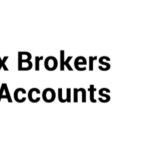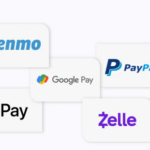About THORChain Defi Coin
THORChain Defi Coin is a liquidity protocol based on Tendermint & Cosmos-SDK and utilising Threshold Signature Schemes (TSS) to create a marketplace of liquidity for digital assets to be traded in a trustless, permissionless & non-custodial manner. THORChain’s liquidity marketplace design obviates the need for order book exchanges when simply swapping one asset for another and provides ancillary benefits including manipulation resistance & on-chain price feeds.
THORChain is able to remain chain-agnostic, favoring no specific asset or blockchain and able to scale without sacrificing security. THORChain enables users to swap between digital assets on almost any blockchain in a trustless & permissionless setting. Liquidity is provided by liquidity providers who earn fees on swaps, turning their unproductive assets into productive assets in a non-custodial manner. Market prices are maintained through the ratio of assets in pools which can be arbitraged by traders to restore correct market prices.
THORChain Defi Coin Project Facts
| 0x | Facts |
|---|---|
| Defi Coin Name | THORChain Defi Coin |
| Short Name | RUNE |
| Max Supply | 500,000,000 RUNE |
| Ethereum Contract | RUNE-B1A |
| Whitepaper | Click Here To View |
| Circulating Supply | 158,432,088 RUNE |
| Official Website | Click Here To Visit |
How It Works
THORChain Defi Coin uses some novel innovations to build an application-specific blockchain network that sets a standard for cross-chain decentralised finance. There are some parts of the system that are fundamental and should be understood well:
- Has a Reserve that pays out every block to Nodes and Liquidity Providers
- Uses an Incentive Pendulum to ensure safety at all times
- Has a governance process to minimise disruptions to the chain, whilst enabling orderly upgrades
- Uses Continuous Liquidity Pools as the basis of asset exchange
- Allows the system to be aware of the prices of every asset in its system
- Charges fees to maximise revenue to the system
- Uses a Swap-Queue to order and process inbound swaps
Design
THORChain has been designed to be blockchain agnostic, favoring no specific chain or asset; but connecting blockchains together via bridges which enable the movement of assets into pools & out to users. The following components have been considered in THORChain’s design, enabling trustless, permissionless and non-custodial properties for staking, swapping & trading.
THORChain Markets

It’s Used by Nodes as Bond
Sybil-resistance refers to the ability to prevent someone masquarading as many identities in order to overcome a network. THORChain could be called a Proof of Bond network. In THORChain Defi Coin the nodes commit a (ᚱ) RUNE bond i.e. minimum of 1,000,000 (ᚱ) RUNE in order to be churned into the network.
If the node attempts to steal assets, then their bond is deducted to the amount of the assets they stole (1.5X), and the pools are made whole. Additionally, nodes have to perform a lot of mandatory services, else their (ᚱ) RUNE bond is deducted.
It’s Used to Secure Assets
The Incentive Pendulum ensures that nodes are incentivised to continually buy and bond enough (ᚱ) RUNE each time to maximise their gains – which is a maximum when there is 67% of RUNE bonded and 33% pooled in pools. If the pools are holding $1M in capital, then the value of RUNE in the aggregrate bond is $2M. Thus all assets can be underwritten.
The bond is extremely liquid – any (ᚱ) RUNE holder can immediately enter or exit their position since (ᚱ) RUNE is the settlement asset in all pools. Thus, when a node churns in, the cost basis of their bond is known to them and not an arbitrary “paper” figure. This means a node bonding $1M in RUNE will never contemplate making a decision to steal <$1M in capital from the network, else they will lose overall.
It Signals Listing and Delisting
While THORChain Defi Coin strives to be governance-minimal, there are some parts of the protocol that use committed capital to signal priority. This is the case for the asset listing process, where every three days a new asset can be listed as a pool. In a queue of standby assets, the one with the deepest commitment of RUNE is the one that is listed first. Additionally, if a connected chain is no longer economically valuable, then all Liquidity Providers in that chain can leave. If a pool is empty, it will be delisted, and this will cause the network to immediately sever ties with that chain in a process call a “ragnarok”.
It Incentivizes The Network
(ᚱ) RUNE is the native currency of THORChain and is consumed as transaction fees on the network. All swaps are charged both a fixed network fee, as well as a dynamic slip-based fee. This prevents various attack paths such as denial-of-service attacks, as well as sandwich attacks on a pool.
The network continually consumes gas as it makes transactions. Nodes are free to use at-will the base assets BNB.BNB, ETH.ETH, BTC.BTC, etc in order to pay for gas. These assets are used directly from the vaults. THORChain then observes outgoing transactions, reports on the gas used, and then pays back the Liquidity Providers in those pools to the value of twice the amount of gas used, in (ᚱ) RUNE.
After fees are charged and gas is subsidised, THORChain computes the block reward, divides it based on the Incentive Pendulum algorithm, and then pays out to Bonders and Liquidity Providers. This drives Nodes to bond the optimal amount, and pays Liquidity Providers for their contribution of liquidity.
THORChain Protocol an Exchange?
The interfaces which connect to the THORChain Defi Coin protocol are technically the exchanges. This includes BEPswap, ASGARDEX, community-written apps, interfaces or even bots i.e Mjölnir Telegram bot. THORChain is a premissionless liquidity network, meaning that anyone can tap into it and provide swapping or pooling services (and even earn fees from it). A network of 99+ distributed, public and anonymous nodes power the whole.








